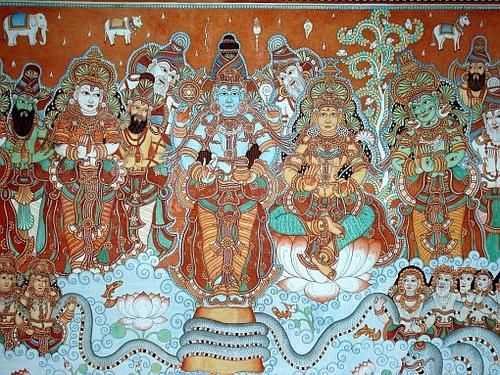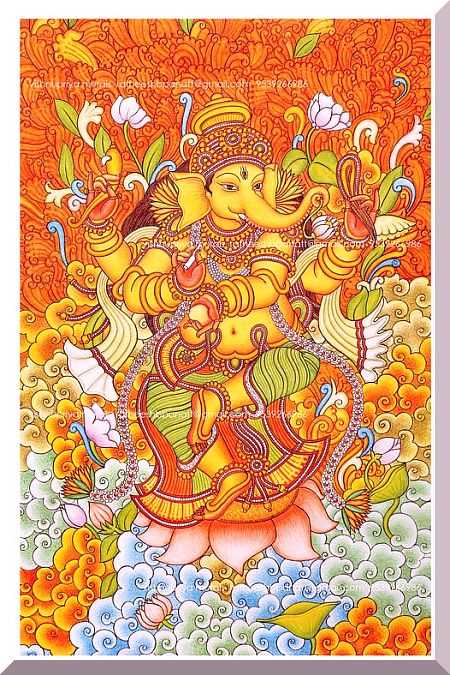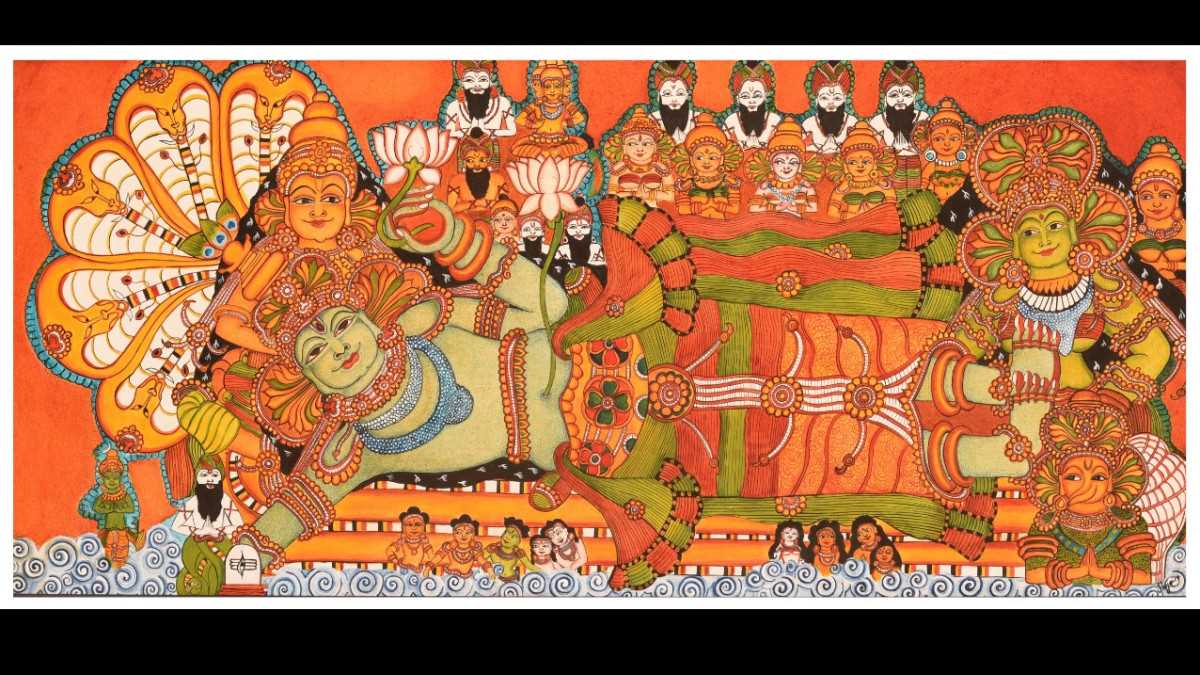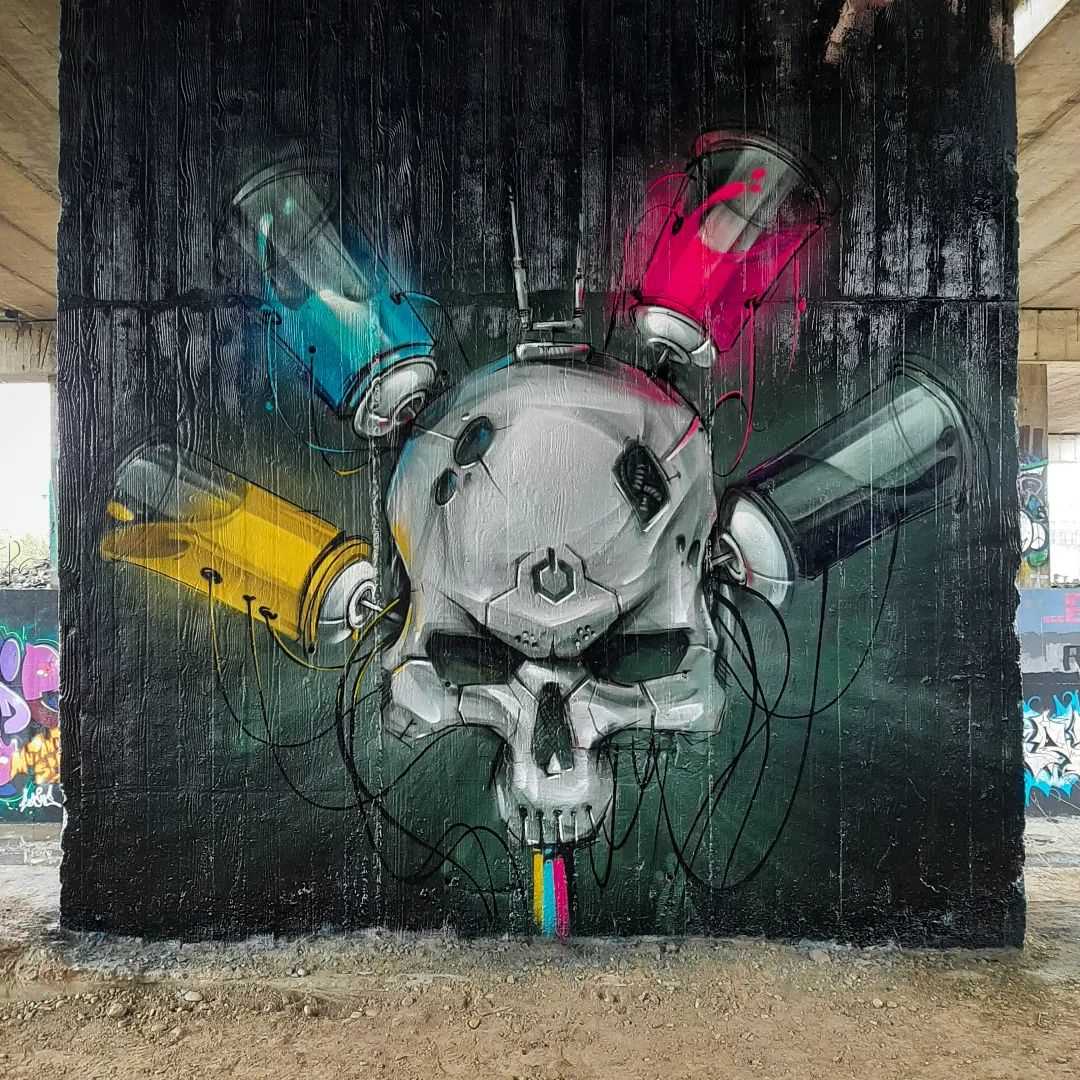The state of Kerala in India is renowned for its rich cultural heritage and artistic traditions. Among its many artistic treasures, Kerala mural painting stands out as a unique and captivating form of art. With its origins dating back to the 8th century, this ancient form of painting has continued to flourish and evolve, showcasing the unparalleled skills and creativity of its artisans.
Kerala mural painting is characterized by its vibrant colors, intricate details, and portrayal of mythological themes. The paintings, which are usually done on walls and ceilings of temples and palaces, depict scenes from Hindu mythology and legends. Each painting tells a story, bringing to life the rich cultural and religious heritage of Kerala.
The process of creating a Kerala mural painting is a meticulous and time-consuming one. It starts with the sketching of the design on the surface, followed by the application of a paste made from natural materials, such as powdered stones, pigments, and gum. The artists then painstakingly fill in the details, layer by layer, using brushes made from squirrel hair. This process gives the paintings their characteristic three-dimensional effect and a unique texture.
What sets Kerala mural painting apart is not only its artistic beauty, but also the spiritual and philosophical significance that it holds. The paintings are believed to have a transformative effect on the viewer, connecting them with the divine and invoking a sense of awe and reverence. They are considered to be a form of meditation, transporting the viewer to a higher realm of consciousness.
In recent years, there has been a renewed interest in Kerala mural painting, both within India and internationally. Artists and art enthusiasts are captivated by its timeless beauty and intricate craftsmanship. Workshops and classes are being conducted to impart the skills and techniques required to create these mesmerizing paintings, ensuring that this rich tradition continues to thrive and be appreciated by future generations.

Kerala Mural Painting is a traditional form of art that originated in the southern state of Kerala, India. It is known for its intricate details, vibrant colors, and portrayal of mythological and religious stories.
Ancient Origins
The roots of Kerala Mural Painting can be traced back to the 9th century, during the reign of the Chera dynasty. This art form flourished under the patronage of kings and noblemen, who commissioned artists to decorate the walls of temples and palaces.
Distinct Style and Technique
Kerala Mural Painting is characterized by its unique style and technique. Artists use natural pigments and dyes made from plants, minerals, and shells to create their vibrant color palette. The paintings are done on specially prepared walls using a combination of mineral pigments and natural adhesive.
The figures in Kerala Mural Paintings are often depicted with elongated eyes, sharp features, and slim bodies. They possess a certain grace and elegance that adds to the overall beauty of the artwork.
Subject Matter

Kerala Mural Paintings primarily depict scenes from Hindu mythology and religious stories. The paintings are often found in temple sanctums and depict gods, goddesses, and mythological characters.
The subjects of the paintings are chosen based on their spiritual significance and their ability to convey moral and ethical values. Each painting tells a story, capturing a moment from a larger narrative in a visually stunning way.
Preserving the Tradition
Despite the passage of time, Kerala Mural Painting has managed to retain its essence and continues to be practiced, albeit in smaller numbers. Efforts are being made to preserve this ancient art form and pass it on to future generations of artists.
Various institutions and organizations are conducting workshops and training programs to teach the techniques of Kerala Mural Painting. This ensures that the traditional skills and knowledge are passed on to the next generation, keeping the art form alive and thriving.
| Key Features of Kerala Mural Painting |
|---|
| Vibrant colors |
| Intricate detailing |
| Depiction of mythological and religious stories |
| Natural pigments and dyes |
| Specially prepared walls |
Captivating Kerala Mural Painting Outline Sketches
Intricate Details
The outline sketches of Kerala mural paintings showcase the intricate details that are characteristic of this art form. Every line and curve is meticulously planned and drawn to ensure the final mural is a work of perfection. The sketches often include the main elements of the painting, such as the figures, deities, and decorative motifs.
These sketches serve as a roadmap for the artists, allowing them to envision the composition and placement of each element. Artists refer to these sketches as they fill in the colors and bring the painting to life.
Visualizing the Composition

The outline sketches also help in visualizing the overall composition of the mural. They provide a sense of the scale and proportions of the different elements. Artists can experiment with different compositions and make adjustments before starting the actual painting.
By having a visual representation of the mural beforehand, artists can focus on perfecting the details and enhancing the narrative depicted in the painting.
Moreover, these sketches help in creating a harmonious balance between all the elements, ensuring that the final mural is visually appealing and captivating.
A Glimpse into the Artistic Process
Studying the outline sketches of Kerala mural paintings gives us a glimpse into the artistic process behind creating these masterpieces. It allows us to appreciate the skill and craftsmanship required to bring each painting to life.
The sketches reveal the thought and precision that goes into planning every aspect of the painting. They showcase the artist’s creativity and ability to transform a blank canvas into a mesmerizing work of art.
Whether you are an art enthusiast or someone who simply appreciates beauty, exploring the captivating outline sketches of Kerala mural paintings will undoubtedly leave you in awe of this rich artistic tradition.
Preserving the Legacy: Importance of Kerala Mural Painting Outline Sketches
Kerala Mural Painting is an ancient art form that holds a rich heritage and cultural significance in the state of Kerala, India. The art form dates back to the 9th century and has been an integral part of Kerala’s traditional art scene ever since.
One of the most important aspects of Kerala Mural Painting is the creation of outline sketches. These sketches serve as the foundation of the final mural, acting as a guide for the artists to fill in the colors and intricate details. They are essentially the blueprint that allows the painting to come to life.
Precision and Accuracy
The creation of outline sketches requires immense precision and accuracy, as any errors or misalignments can have a significant impact on the final mural. The artists pay meticulous attention to detail, ensuring that every line and curve is in its rightful place. This meticulousness allows the traditional art form to be preserved in its true essence.
The outline sketches also help in maintaining the proportion and scale of the mural. Kerala Mural Painting is known for its elaborate and intricate designs, with multiple characters and elements typically included in a single artwork. The outline sketches act as a guide for the artists to ensure that all the elements are harmoniously placed and balanced.
Preserving the Traditional Techniques

Another important aspect of the outline sketches is the preservation of the traditional techniques of Kerala Mural Painting. The sketches are often passed down through generations of artists, ensuring that the knowledge and skill of creating these sketches are preserved.
These sketches are a valuable resource that allows new artists to learn and study the techniques used in Kerala Mural Painting. By following the outline sketches and understanding the process behind them, artists can carry on the legacy of this ancient art form and create their own masterpieces.

I am a mural enthusiast and a fervent admirer of street art. Rather than creating murals myself, I am passionate about collecting them. My love for street art knows no bounds. I am dedicated to curating and cherishing these artworks that grace the streets. My collection stands as a testament to my profound appreciation for this form of artistic expression.
read about me




